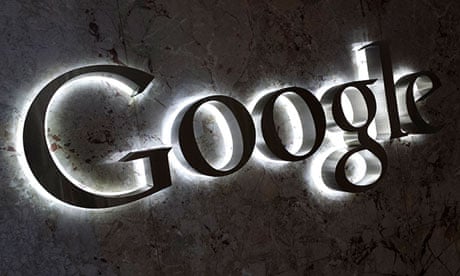Since ancient Greek times it has been generally accepted that the world is round, but it now seems to be getting flatter. Loading up Google now, you would be forgiven for missing a momentous move in the search engine giant's branding strategy – it has dropped the drop-shadows and gone flat.
When they were not pretending to be animals or spaceships as part of the increasingly elaborate Google Doodles, the letters of the logo used to hover just in front of the page, plump and polished, as if freshly rolled out of Play-Doh. Floating above a subtle shadow, they always looked poised to launch into an impromptu animation at any second, or dash off to fetch you any fact you desired.
But now Google has followed Apple's lead and banished the third dimension. It has got out the rolling pin and left its letters stuck to the screen.
It is a welcome move in what had become an increasingly noisy world of user-interface design over the past five years, as Steve Jobs's love of skeuomorphic design led to a digital world of everything trying to look like what it was in the real world. It was the defining image of the first Macs – filing documents in folder-like folders and sending deleted items to an actual trash can – but it had grown into a kitsch cacophony of spiral-bound address books and yellow-ruled legal pads populating a retro office-world of lacquered veneer and green baize.
It was also an era in which all logos came to look like buttons or sweets, juicy translucent blobs that we could imagine caressing, like the seductive products on which they were emblazoned.
Now, it seems, things no longer have to look three-dimensional for us to know we're meant to touch or click on them, pinch or swipe them. Both Windows 8 and iOS7 do away with the drop-shadows and reflections, leather-stitching and torn edges. Instead, we are given a world of "layers" of imperceptibly thin, flat films of information that float above and on top of each other in a simpler, slicker, primary-coloured world. The fonts have been stripped back, too, Apple opting for the super-skinny Helvetica Neue Ultra Light, which is barely there at all.
But not everyone is following suit. Yahoo, ever wanting to buck the trend, has done precisely the opposite. This month it abandoned its flat purple letters and unveiled a new, "chiselled" typeface, after a 30-day stream of bombarding its users with a different logo each day and launching a video about how it came up with an image "that stayed true to our roots (whimsical, purple, with an exclamation point) yet embraced the evolution of our products".
I prefer Google's approach: "We've refined the colour palette and letter shapes of the Google logo," the company said in a statement. And it will be a success if most people don't even notice.

Comments (…)
Sign in or create your Guardian account to join the discussion